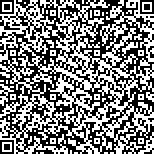| 摘要: |
| [摘要] 目的 探讨发作性睡病及阻塞型睡眠呼吸暂停低通气综合征(OSAHS)睡眠监测的特征。方法 观察发作性睡病组和OSAHS组各15例,分别进行多次睡眠潜伏期试验(MSLT)及多导睡眠图(PSG)检查,分析睡眠潜伏期、睡眠初期出现快眼动睡眠相(REM)次数(SOREMP)、总睡眠时间、睡眠有效率、睡眠呼吸暂停低通气指数(AHI)等参数并进行比较。结果 与OSAHS组比较,发作性睡病组平均睡眠潜伏期明显缩短[(3.93±2.99)min vs (10.39±2.01)min,P<0.01];SOREMP明显增多[(2.87±0.83)次 vs (0.27±0.59)次,(P<0.01)];睡眠总时间减少[(395.77±47.74)min vs (495.95±29.15)min,(P<0.01)];睡眠有效率降低[(75.95±4.37)% vs (82.81±2.81)%,(P<0.01)]。而OSAHS组AHI高于发作性睡病组[(25.85±3.61)次/h vs (0.79±1.08)次/h,(P<0.01)]。结论 与OSAHS相比,MSLT显示发作性睡病患者存在更明显睡眠结构紊乱,即平均睡眠潜伏期缩短、SOREMP增多;PSG显示其睡眠总时间减少、睡眠有效率降低、无睡眠呼吸紊乱,而OSAHS存在明显睡眠呼吸障碍。MSLT联合PSG检查在发作性睡病及OSAHS的诊断及鉴别诊断中具有重要的价值。 |
| 关键词: 发作性睡病 阻塞型睡眠呼吸暂停低通气综合征 多导睡眠图 多次睡眠潜伏期试验 |
| DOI:10.3969/j.issn.1674-3806.2013.11.08 |
| 分类号:R 56 |
| 基金项目: |
|
| Comparison of result of sleep monitoring between patients with narcolepsy and patients with obstructive sleep apnea-hypopnea syndrome |
|
LIANG Da-hua, LIU Jian-hong, XIE Yu-ping
|
|
Sleep Disordered Breathing Center of Guangxi, the People′s Hospital of Guangxi Zhuang Autonomous Region,Nanning 530021,China
|
| Abstract: |
| [Abstract] Objective To explore the characteristics of the sleep monitoring in patients with narcolepsy and patients with obstructive sleep apnea-hypopnea syndrome(OSAHS).Methods The sleep latency(SL), sleep onset rapid eye movement period(SOREMP),total sleep times(TST),sleep efficiency(SE) and apnea hypopnea index(AHI) were determined in 15 patients with narcolepsy group and 15 patients with OSAHS group using multiple sleep latency test(MSLT) and all-night sleep recording by polysomnography(PSG) measurements, and the monitoring results were compared between two groups.Results Compared to OSAHS group, narcolepsy group showed SL was shorter significantly[(3.93±2.99)min vs (10.39±2.01)min,P<0.01] and SOREMP was increased significantly[(2.87±0.83) vs (0.27±0.59)times/h,P<0.01] on MSLT. The sleep parameters of PSG showed that compared to OSAHS group,TST was less[(395.77±47.74)min vs (495.95±29.15)min,P<0.01],and SE was lower[(75.95±4.37)% vs (82.81±2.81)%,P<0.01]in the narcolepsy group than those in the OSAHS group(P<0.01);AHI was higher in OSAHS group than that in narcolepsy[(25.85±3.61) vs (0.79±1.08)times/h,P<0.01].Conclusion SL was shorter and SOREMP was more in narcolepsy group than those in OSAHS group.PSG showed that TST was less,and SE was lower in narcolepsy group than those in OSAHS group.The sleep respiratory disturbance is more obvious in the OSAHS group than that in narcolepsy group. The MSLT combined with PSG have played an important role in the diagnosis and differential diagnosis of narcolepsy and OSAHS. |
| Key words: Narcolepsy Obstructive sleep apnea-hypopnea syndrome(OSAHS) Polysomnography(PSG) Multiple sleep latency test(MSLT) |

